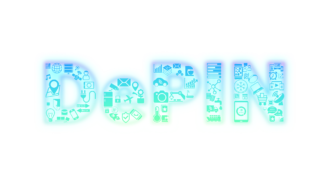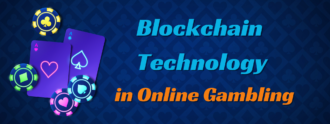The Rise of Crypto Collectibles: How Blockchain Technology is Reshaping Digital Asset Ownership
The world of digital assets has undergone a significant transformation over the last few years, thanks to the introduction of blockchain technology. Among the innovative use cases of blockchain, crypto collectables have emerged as a popular way for people to own, trade, and collect unique digital assets. Crypto collectables are digital assets that use blockchain technology to certify their authenticity and uniqueness, making them different from traditional digital assets that can be easily duplicated or replicated.
Crypto collectables are becoming increasingly popular due to their unique properties, such as scarcity and verifiable ownership, which make them highly valuable in the eyes of collectors and enthusiasts. Additionally, blockchain technology’s decentralized nature ensures that crypto collectables are not controlled by any central authority, making them accessible to everyone and removing any intermediaries that may be involved in the traditional asset ownership model.
This article explores the rise of crypto collectables and how blockchain technology is reshaping digital asset ownership. We will look at the background of cryptocurrency and blockchain technology, the development of non-fungible tokens (NFTs), and the emergence of crypto collectables. We will also examine the concept of digital asset ownership, the challenges of digital asset ownership, and how blockchain technology enables ownership. Furthermore, we will discuss examples of popular crypto collectables, the associated opportunities and challenges, and the future of crypto collectables and digital asset ownership.
Background
The roots of cryptocurrency can be traced back to the early 2000s when the concept of digital cash was introduced. However, it was not until the invention of Bitcoin in 2009 by an anonymous person/group under the pseudonym of Satoshi Nakamoto that cryptocurrency gained widespread attention. Bitcoin is a decentralized digital currency operating on a blockchain, a distributed ledger that records all transactions made on the network. Since then, several other cryptocurrencies have been introduced, such as Ethereum, Ripple, and Litecoin.
Blockchain technology, the underlying technology behind cryptocurrencies, is a decentralized and distributed ledger that records transactions securely, transparently, and immutable. The decentralized nature of blockchain ensures that there is no central point of control, making it highly secure and resistant to fraud and hacking attempts. It also allows faster, cheaper, and more efficient transactions than traditional methods.
In 2017, the concept of non-fungible tokens (NFTs), unique digital assets that are not interchangeable with other tokens, was introduced. NFTs are often used to represent digital art, music, videos, and other forms of media. Unlike traditional digital assets, NFTs are one-of-a-kind, meaning they cannot be replicated or duplicated.
Crypto collectables are a subset of NFTs that represent unique digital assets that are highly collectable, such as rare virtual trading cards, virtual real estate, and even virtual pets. Crypto collectables have gained significant popularity in recent years due to their unique properties, such as scarcity and verifiable ownership, making them highly valuable to collectors and enthusiasts. They are often bought and sold on blockchain marketplaces using cryptocurrency.
Developing cryptocurrency, blockchain technology, NFTs, and crypto collectables has revolutionized how we think about digital assets and ownership. As more people become aware of the benefits of blockchain technology, we can expect to see further innovation in this space, with new use cases for crypto collectables and other digital assets.
The Concept of Digital Asset Ownership
In the traditional world, ownership of physical assets, such as property or stocks, is established through a series of legal agreements and documentation. However, ownership in the digital world is more complicated due to the intangible nature of digital assets. Digital assets can be easily replicated, duplicated, or transferred, making it challenging to establish ownership and control. This is where blockchain technology comes in, as it creates secure, transparent, and immutable digital ownership records.
Digital asset ownership is critical in the digital world, as it enables individuals to control their digital assets and determine how they are used and accessed. For example, owning an NFT of a digital artwork gives the owner the exclusive rights to display, distribute, and profit from that artwork. Ownership also plays a critical role in creating digital assets, as creators can establish ownership rights for their work and protect it from unauthorized use or distribution.
One of the challenges of digital asset ownership is the lack of standardization in ownership records, making verifying ownership and preventing fraudulent activities challenging. Additionally, digital assets are vulnerable to hacking and cyber-attacks, which can result in losing ownership or control over the asset. Another challenge is the legal implications of digital asset ownership, as many countries have different laws and regulations surrounding digital ownership rights, making it challenging to enforce ownership claims across borders.
In conclusion, ownership is critical in the digital world, as it enables individuals to control their digital assets and determine how they are used and accessed. However, the intangible nature of digital assets and the lack of standardization in ownership records and legal implications present significant challenges that must be addressed. Blockchain technology solves these challenges by enabling the creation of secure, transparent, and immutable ownership records.
How Blockchain Enables Ownership
Blockchain technology enables ownership verification by creating a decentralized, secure, and transparent record of ownership that is immutable and cannot be altered or tampered with. It is achieved through a network of nodes validating and verifying transactions and ownership records. Each node on the network holds a copy of the blockchain, ensuring that no single entity has control over the record of ownership. It makes it easy to verify ownership and transfer digital assets securely and transparently.
Smart contracts
Smart contracts are self-executing contracts that automatically enforce the rules and conditions of a contract. They can be programmed to transfer ownership automatically once certain conditions are met, such as payment or digital asset delivery. It eliminates the need for intermediaries such as lawyers, brokers, or banks, reducing transaction costs and increasing efficiency. Smart contracts have revolutionized digital asset ownership by automating ownership transfers and enforcing ownership rights securely and transparently.
The adoption of blockchain technology and cryptocurrencies has also significantly impacted the gambling industry. Many online casinos have started to accept cryptocurrencies, such as Bitcoin and Ethereum, as a form of payment for gambling services.
Gambling
Cryptocurrencies in gambling have brought about several benefits, including increased privacy and anonymity for players. Traditional payment methods, such as credit cards and bank transfers, often require players to share their personal and financial information, which can be a security risk. Cryptocurrencies, however, allow players to gamble anonymously, protecting their privacy and security.
Additionally, using cryptocurrencies in gambling has enabled faster and more efficient transactions. Traditional payment methods can take several days to process, while cryptocurrency transactions are often processed instantly, allowing players to access their winnings immediately. This has also led to reduced transaction fees, making gambling more affordable for players, and this is where you can get extra information regarding gambling and entertainment. However, using cryptocurrencies in gambling also presents regulatory challenges similar to those the crypto collectables industry faces. The regulatory landscape surrounding cryptocurrencies varies by jurisdiction, making it difficult for online casinos to establish clear guidelines for using cryptocurrencies in their services. Additionally, using cryptocurrencies in illegal activities, such as money laundering and tax evasion, has raised concerns among regulators, leading to increased scrutiny and potential regulation.
Decentralization
Decentralization is a critical feature of blockchain technology that enables the transfer of ownership without intermediaries. It eliminates the risk of fraud and reduces transaction costs, making ownership transfers faster, cheaper, and more secure. Decentralization also provides greater privacy and anonymity, which is particularly important for industries like gambling. Many online casinos now accept cryptocurrency as a payment method, allowing players to gamble anonymously without disclosing their personal information. It has revolutionized the gambling industry and made it more accessible to players worldwide.
In conclusion, blockchain technology has revolutionized digital asset ownership by creating a decentralized, secure, and transparent record of ownership that can be easily verified and transferred. Smart contracts and decentralization have further enhanced the efficiency and security of ownership transfers, reducing transaction costs and eliminating the need for intermediaries. Adopting blockchain technology in industries like gambling has also enabled greater privacy and anonymity, making it more accessible to players worldwide. It makes blockchain technology an essential tool for anyone looking to establish and protect ownership of their digital assets.
Opportunities and Challenges of Crypto Collectibles
Crypto collectables offer new opportunities for creators and collectors. Creators can tokenize their digital assets and sell them as unique, one-of-a-kind collectables, providing a new revenue stream for their work. On the other hand, collectors can buy and sell these collectables to invest in and own unique digital assets. Crypto collectables also offer new gaming opportunities, as they can be used as in-game items or rewards, providing a new dimension to the gaming experience.
One of the challenges of crypto collectables is the lack of regulatory clarity surrounding their ownership and transfer. The regulatory landscape is complex and varies by jurisdiction, making establishing ownership rights and enforcing ownership claims difficult. Additionally, using crypto collectables in illegal activities, such as money laundering and tax evasion, has raised concerns among regulators, leading to increased scrutiny and potential regulation.
Another challenge of crypto collectables is their environmental impact. Creating and validating blockchain transactions requires a significant amount of energy, leading to concerns about the carbon footprint of crypto collectables. This has led to a growing interest in sustainable blockchain solutions, such as proof-of-stake, which requires less energy than traditional proof-of-work algorithms.
In conclusion, crypto collectables offer new opportunities for creators, collectors, and gamers, providing a new dimension to the digital asset ownership experience. However, the lack of regulatory clarity and environmental impact concerns present significant challenges that must be addressed. Regulators will need to establish clear guidelines for ownership and transfer, while developers will need to explore sustainable blockchain solutions to minimize the environmental impact of crypto collectables. Despite these challenges, crypto collectables will likely play an increasingly important role in digital asset ownership, offering new opportunities and challenges for creators, collectors, and regulators alike.


















